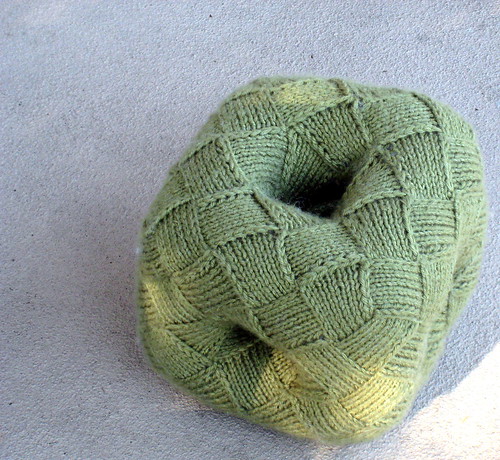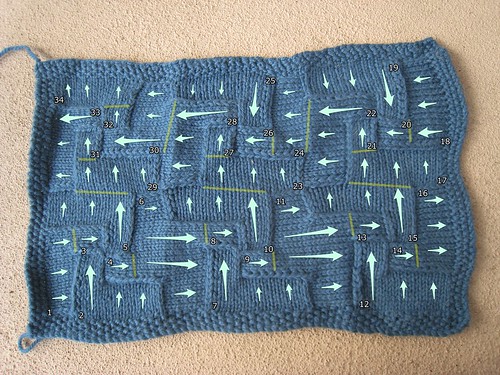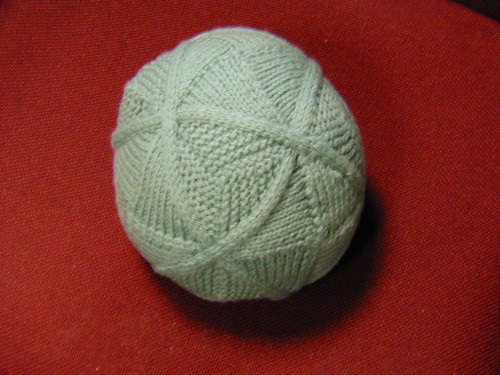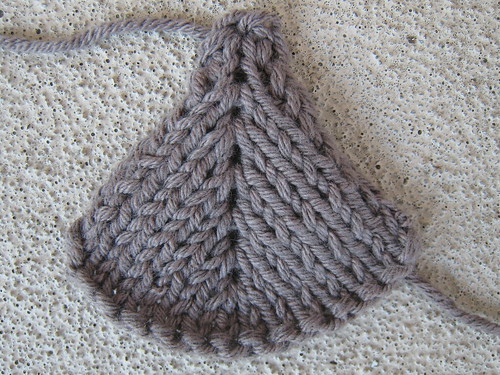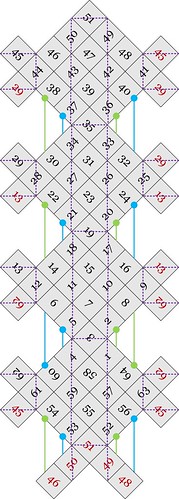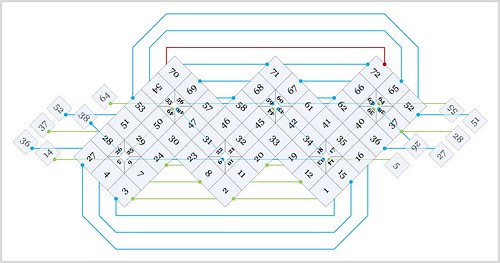This diagram shows the connections between the squares in my "world-famous" entrelac Menger Sponge.
The Sponge's claim to fame:
- It is knitted with a continuous thread of yarn.
- There are no sewn seams, and only one grafted seam at the very end.
- Since there are no seams, it is strong and flexible.
- It fits together nicely with the "Baby Shape" which I posted earlier on my blog (fuzzyjay.blogspot.com).
- No-one else has duplicated it. I've knit it twice. But I would be pleased if somebody else wants to take it up.
The diagram's claim to fame:
- It's hard to understand. But easy when you know how. I think.
- I tried to get the diagram to show the connections between the entrelac squares but it's tough with an object that's not convex, and has many holes.
What the diagram's squares mean:
Diagram squares represent knitted squares, numbered in the order they are knit. The diagram square's number show the direction of knitting. Knitting starts from the bottom of the diagram square when you are viewing the number upright.
At the end of the knitting, knitted squares are attached on all four edges to other squares. The attachments of knitted squares is shown by drawing the diagram squares with common edges where possible. Where not possible, the connection is shown by green or blue lines that connect the diagrammed squares.
One knitted square is always connected to the next square and the previous square by corners at least, if not also by its edges. This isn't always obvious on the diagram.
Colored lines connect squares that are joined together in the knitting, but can't be shown adjacent to each other in the diagram. Here's what the colors mean:
- Green lines represent picking up the first row of a knitted square from the side edge of a previously knit square.
- Blue lines represent a selvedge that is knitted together with a previous square's starting or finishing row.
- One red line at the end connects the last row of knitting that must be grafted to a previous selvedge to close the knitted piece.
A knitted square can start one of two ways:
- The square may be cast on, in which case either:
- The square's bottom edge shares an edge with a square (with a higher number) that will later be joined to this square, or
- The bottom edge of the square has a blue line touching it that leads to a square that will later be joined to this one.
- The square may be picked up from the side of a previous square, in which case either:
- The square shares an edge with a previous square (with a lower number) that's providing the pickup edge, or
- The bottom edge of the square wears a green dot with a green line attached that leads to the square that's providing the edge to be picked up.
A knitted square's side edges, right after knitting it, will be either free or attached:
- The side edge in question will be free, if either:
- The edge is shared with another square that has a higher number, therefore the other square hasn't been knitted yet, or
- The edge has a green line attached that you can follow to the later square that will be picked up from it.
- The side edge in question will be attached, if either:
- The edge is shared in the diagram with another square that has a lower number. You'll work that square's free(d) stitches with the one you're working, or
- The edge has a blue dot attached to it. Follow the blue line to an earlier-knit square whose stitches you'll work together with this edge.
A knitted square's top edge ends up in one of three ways:
- The square's last row's stitches are left on stitch holders, piece of string, or section of the circular needle to be put back on the needles and worked later.
- The last row of the square is left on the needle and joined together immediately to the next square:
- The square you’re working and the next square share an edge in the diagram, or
- The square you’re working and the next-numbered square are connected with a blue line.
- The last very last row of the knitting will be woven to the side of the square indicated at the end of the red line. That will be the only free side edge left!
Posted via email from Fuzzy Logic
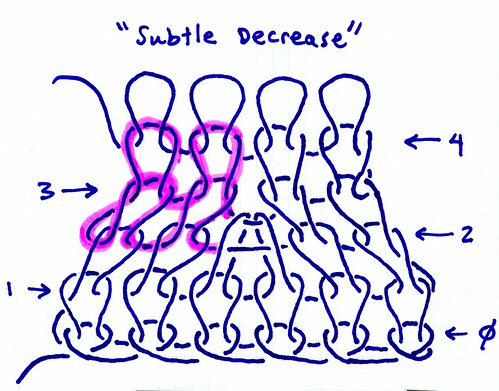 Subtle Decrease diagram, originally uploaded by fuzzyjay.
Subtle Decrease diagram, originally uploaded by fuzzyjay.